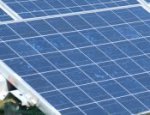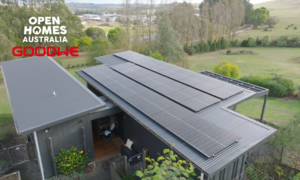An updated edition of “Energy Self-Reliant States” from the New Rules Project, a program of the US-base Institute for Local Self-Reliance, suggests that every state in the USA could generate a significant percentage of its electricity with home-grown renewable energy.
This report also poses some interesting points relevant to Australia’s Solar Flagships program, which will see $1.5 billion spent on just four major solar projects. According to Australian New Zealand Solar Energy Society chief executive, John Grimes, it would be better for the government to fund a large number of smaller solar farms around Australia.
The “Energy Self-Reliant States” report states that at least 60% of all US states could meet all their internal electricity needs from renewable energy generated inside their borders.
To achieve such a significant degree of energy independence will take the effective harnessing of the most decentralized of all renewable resources: solar energy.
More than 40 states, plus the District of Columbia, could generate at least 25 percent of their electricity just with rooftop solar power systems.
In the report’s executive summary, the authors state their data may be conservative. The report does not, for example, estimate the potential for ground based solar farms, which would dwarf the rooftop potential.
Supporters of inter-regional transmission networks say that while renewable energy can be sourced in some form everywhere, areas with more reliable and higher speed winds or with more abundant sunshine can generate electricity cheaper. The report claims in most cases, these significant variations result in modest variations in the retail cost of energy when the cost of transporting the energy is taken into account.
The report argues if electricity is transported from renewable sources over a thousand kilometres away, the cost of constructing new transmission lines to carry that power and the electricity losses during transmission could result in an electricity cost to the customer that is about the same, or higher, than local generation with minimal transmission upgrades.
Additionally, the impact of renewable energy development on local and state jobs and economies could see state-based energy self-reliance strategies being clear economic winners.
As Australia moves towards massive electricity infrastructure upgrades and the potential for renewable energy electricity consumption being some distance away from the point of generation, “Energy Self-Reliant States” makes for interesting reading.
The full Energy Self-Reliant States report can be viewed here (PDF)












































